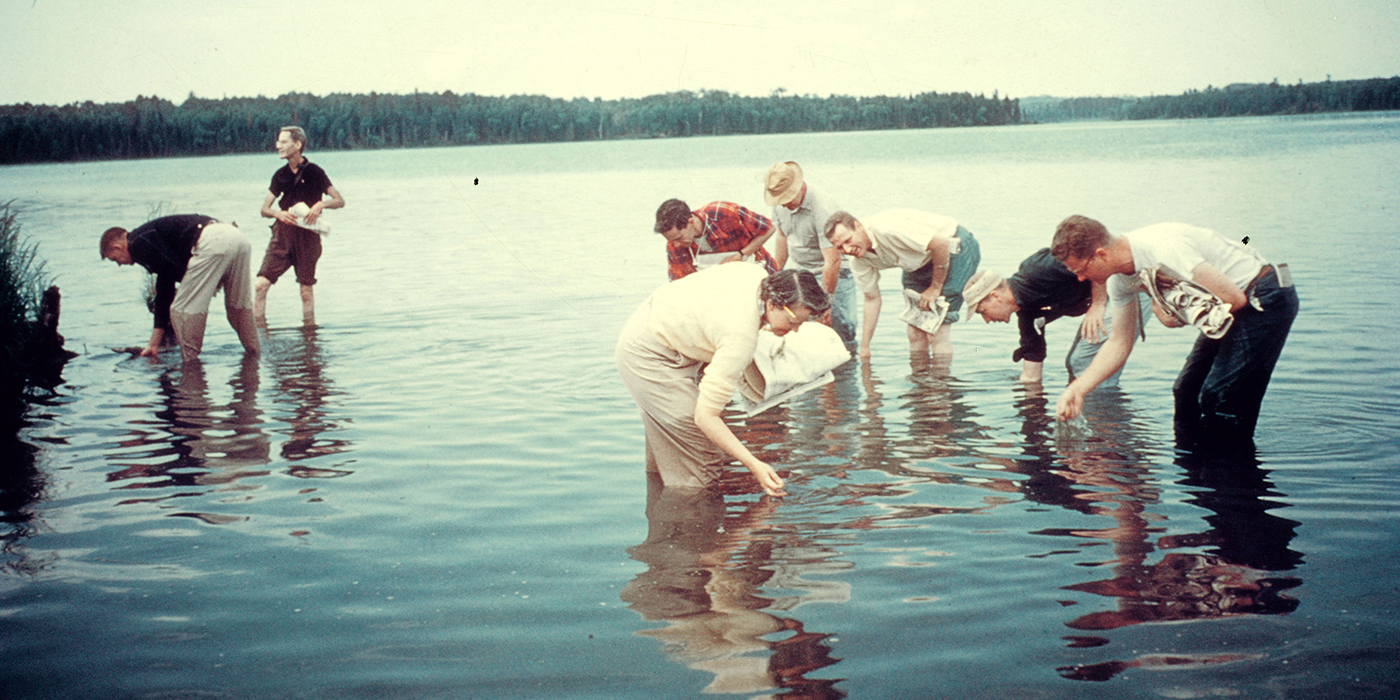
- Evidence of the earliest residents, dating back 8,000 years, has been found in the headwaters area.
- Remains of villages dating back 500–3,000 years have been discovered along the shores of Lake Itasca.
- In 1832, an Ojibwe guide named Ozawindib, led explorer Henry Schoolcraft to the source of the Mississippi at Lake Itasca. The name Itasca comes from verITAS CAput, the Latin words for “truth” and “head.”
- In 1891, Jacob Brower, a historian, anthropologist and land surveyor, persuaded the Minnesota Legislature to designate Itasca as Minnesota’s first state park. The action protected the unique area from logging and development.
- In 1903, 24-year-old Mary Gibbs was appointed acting park commissioner when her father, John P. Gibbs, died. The first female park commissioner in North America, she risked her life to save the forest by standing up to loggers who tried to illegally flood the park.
- The University of Minnesota established a field station at Itasca State Park in 1909 to train forestry students.
- The UM Itasca field station welcomed biology students in 1935. Four cabins for women students were added to the station.
- Raymond Lindeman attended the first biology session at Itasca in 1935 and penned a poem extolling its ecological riches. Lindeman’s discovery of how energy moves through the food chain provided the basis for modern ecosystem science.
- Several original log buildings—the barn, mess hall and student dormitory—were torn down and replaced between 1946 and 1950.
- Itasca has 60 rustic buildings, most of which were constructed for summer use just after World War II. A 2006 report concluded that most of the older buildings have outlived their usefulness and need to be replaced.
- Nature of Life, an immersion program for biology freshmen, was launched at Itasca in 2003. The program has strengthened community and improved four-year graduation rates. By the end of 2009, 4,000 students will have attended this program.
- Between 1909 and 2008, 925 scientific papers were published based on research at Itasca. All are available through an online database.
- The latest research effort is the Minnesota Mississippi Metagenome Project (M3P)—a DNA database of aquatic microorganisms in the Mississippi River that will be used to study human impact from the headwaters to the Twin Cities.